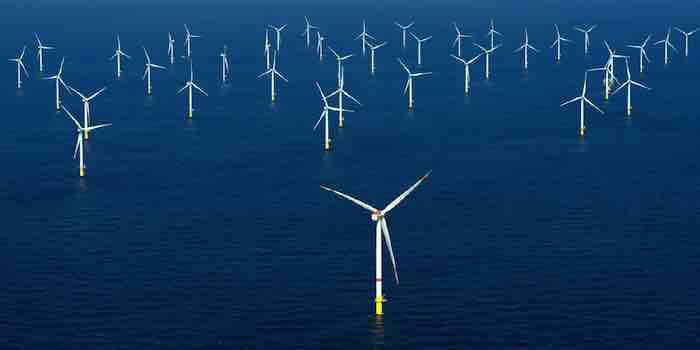By Jack Dini ——Bio and Archives--June 30, 2023
Global Warming-Energy-Environment | CFP Comments | Reader Friendly | Subscribe | Email Us

Last year, the Biden administration set an ambitious new goal for the US: to deploy 30 gigawatts (GW) of offshore wind capacity by the year 2030, increasing US offshore capacity more than seven hundred times. The UK already has 15 GW of offshore wind, more than 300 times as much as the US, and the experience should be a warning to Americans. (1)
The UK's electricity prices are the highest since records began in 1920 and are now among the highest in all Europe. One reason why British electricity is so expensive is because they have so much wind power, particularly, so much offshore wind power. Bad though the current situation is, it could even be worse if they had built even more offshore wind, as the government plans to do.
As an example, the offshore wind farms Hornsea Two and Moray East were completed in 2022 with capital costs of 2.77 billion pounds per GW and 2.75 billion pounds respectively, more than four times the cost of gas turbine capacity. They're expensive to maintain, which is not surprising since offshore wind farms have all their many generations mounted at the top of 200 meter tall masts far away from land. Estimates of maintenance costs are as high as 200 million pounds per GW installed per annum. The nominal cost of offshore wind generation is noticeably higher than for gas turbines, even in these dire times of high gas prices. (1)
Britain, as with much of western Europe, was the victim of the Big Calm that struck in September 2021 and lasted for months. Add in the exorbitant cost of using gas and diesel to generate whenever calm weather sets in; the additional transmission and network costs of bringing power produced occasionally from remote locations; and the billions in subsidies paid to wind power generators all paid for by power consumers and/or taxpayers, and you're well on your way to an explanation as to why wind power is so punishingly expensive. (2)
Another factor: England is simply not windy enough to justify more offshore wind turbines. Hugh McNeal, the chief executive of RenewableUK, said that while there was still a case for more onshore farms elsewhere in the UK, wind speeds in England were just not strong enough for new turbines to make economic sense. (3)
Britain has invested 1.25 billion pounds in wind power, making it the country's biggest renewable energy source. However, opponents point to figures which reveal that on some days wind farms meet as little as 0.5 percent of the nation's electricity demand, and are only profitable because of the massive subsidies paid to operators.
An interesting situation has arisen in the United Kingdom. It speaks to the underlying unreliability of renewable energy and, in particular, the current state of green technology. The lesson one can learn from Britain's current struggles is that unless or until we drastically improve our alternative energy and electricity storage technology, we are not yet able to engage in a meaningful transition. (4)
If wind power is so cheap, then why is it that retail power prices continue to rocket in every country attempting to run on breezes? (2)
1. Paul Homewood, "Britain's green energy disaster should be an awful warning to Americans," wind-watch.org, June 11, 2023
2. "Total Failure: Britain's grand cheap wind power plan faces total collapse," stopthesethings.com, May 23, 2022
3. Liz Hull,,"Proof wind farms should be scrapped? Energy chief admits England is not windy enough for more turbines as ex-minister labels them as a failed medieval technology," dailymail.co.uk, June 5, 2016
4. Ellen R. Wald, 'A warning from the United Kingdom: renewable energy may not suffice," forbes.com, November 5, 2020
View Comments
Jack Dini is author of Challenging Environmental Mythology. He has also written for American Council on Science and Health, Environment & Climate News, and Hawaii Reporter.